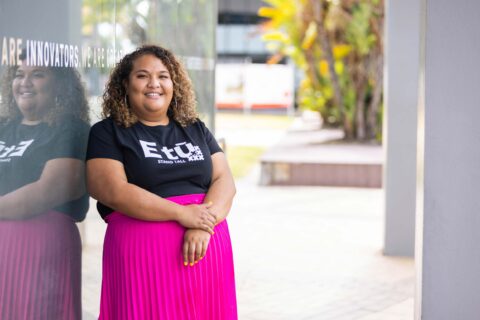After some initial hesitation, Michelle Robinson gives menstrual cups the thumbs up.
We are a one-car family, we use beeswax instead of cling wraps and compost all food scraps. But the last bastion of eco-friendliness was one I alone could conquer.
The first time I’d heard a Mooncup described, I was 19 years old. I was sunbathing on my cousin’s lawn, listening to her flatmate discuss her upcoming travels.
“How will you manage your period in a place with no supermarkets or sanitary bins?” we wondered. We were intrigued. In the 25 years since that chat, menstrual cups have become increasingly mainstream – used by the intrepid traveller and everyday woman alike.
When we don’t want to be interrupted during a confidential tête-à-tête, us girls like to joke to an intruding male presence that we’re “discussing periods”. But sometimes, that’s true; with hormones, flows and irregularities, there’s a lot to discuss.
But the most pressing is what we are prepared to do about the almost 11,000 disposable products a woman might otherwise use in her lifetime.
Period undies and reusable pads have made the need for disposable pantyliners and plastic-wrapped pads redundant.
The move away from tampons – penguin chokers, as the eco-conscious call them – has been somewhat more challenging.
The move away from tampons – penguin chokers, as the eco-conscious call them – has been somewhat more challenging
The logistics must be the biggest hindrance when trying a menstrual cup. Do you taco-fold or punch-down? Do you empty it after four hours or eight? Do you clean it after each use? Should you be able to feel it? How on earth do you not make a mess when you empty the bloody thing?
The seeming impracticalities may be the biggest hurdles preventing women, myself included, from giving a menstrual cup a go.
I had one sitting in my drawer for months after a supermarket impulse buy. I don’t know what I was waiting for. Curiosity? A burden of environmental responsibility? Encouragement?
The latter went part way to doing the trick.
A humble group message promoting a Hello Cup sale was circulated amongst my friends. Menstrual cups are not the cheapest, so a sale item is more enticing to buy if you’re unsure how keen you are.
“These are bloody comfy!” a friend responded. Endorsement by a real person, tick.
I scroll through the colourful, bouncy, and non-threatening website. New Zealand-made. Designed by nurses. Made from medical grade ingredients. A spell-everything-out questions and answers section. And a handy little quiz to find out what product best suits you. I think we’re on to something.
I end up buying a low cervix cup – don’t ask me how a quiz determined that would suit me, I don’t quite know myself. Merely days later, it arrives, in a cute floral-patterned box, complete with FAQ booklet and a little drawstring bag for storage. The ocean green half-egg-shaped cup is reassuringly small in my hand. So, if I balls-up the squeeze-and-hold insertion method, it won’t be a big deal.
I feel buoyed, excited even. Let’s do this! Encouragement and curiosity. Tick and tick.
Later, I realise, I haven’t thought about how I’ll get it out. Argh! It’s bedtime and I send a quick message via the website’s chatbot, but I won’t need an answer until tomorrow.
The next morning, I have stage fright. I’m reminded of my first attempt to remove a tampon in high school when, quietly freaking out, my pelvic floor muscles would almost clench shut. Three births later and I highly doubt I’ll have that issue. Though I still do the freaking out part.
I think I haven’t used it right, as the contents outside the cup (and everywhere else) are significantly larger than the contents in. Not willing to accept defeat – Mother Earth is counting on me – I try again. The next morning there is less mess, though I think I just need a little more practice.
I’m looking at the other cup I have in my drawer, the supermarket one. It’s a size large. It looks three times that of my Hello Cup. I decide another month with it lining my drawer won’t hurt.
I use the Hello Cup consistently overnight throughout my period, but never during the day. Removal still seems inconvenient for being out and about. If I cut down on half my menstrual waste by using my menstrual cup at night, that’s a step in the right direction and the rest will surely follow.
It took the birth of two sons and a daughter before I made the move to more sustainable periods. The motivation? I would love for my daughter to have sustainable periods from the get-go. The first step to making that happen, is to be sustainable myself.
I did it for her. Who knows, by the time she comes of age, there may be little other option.








